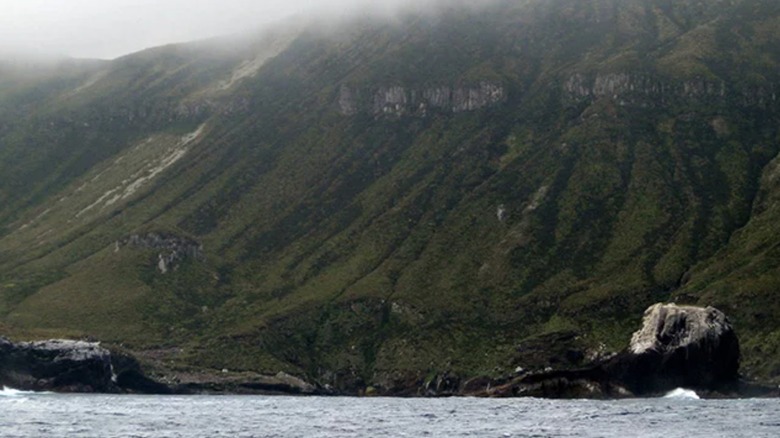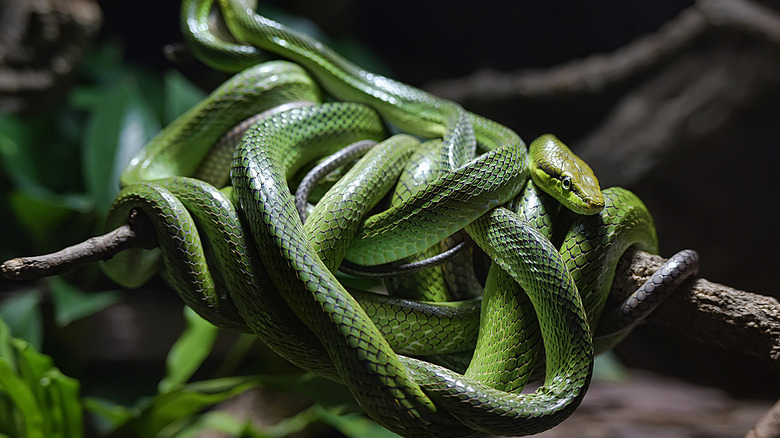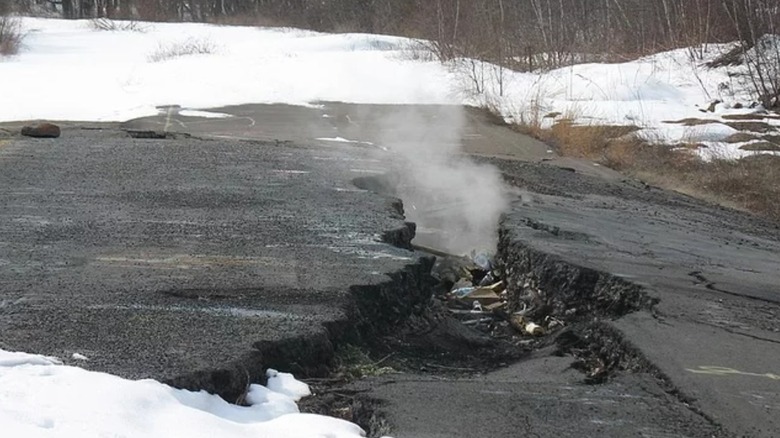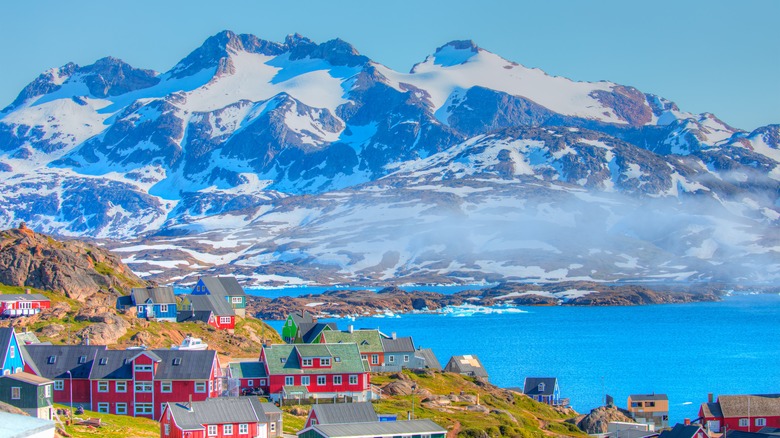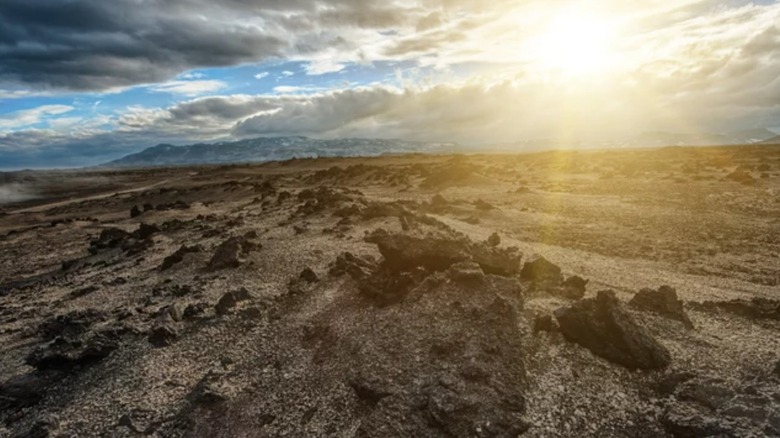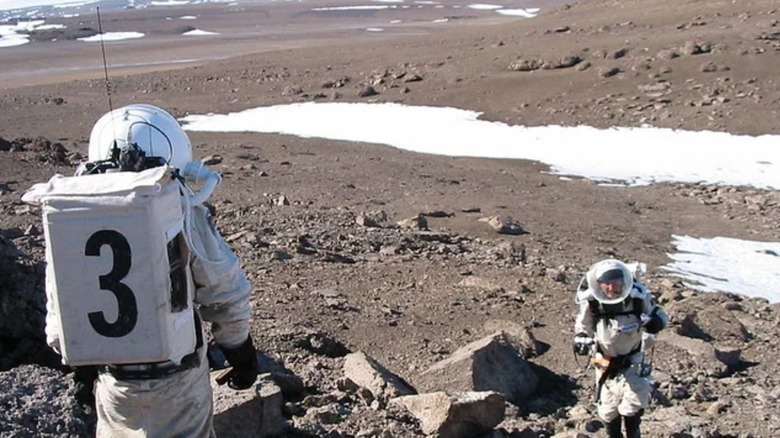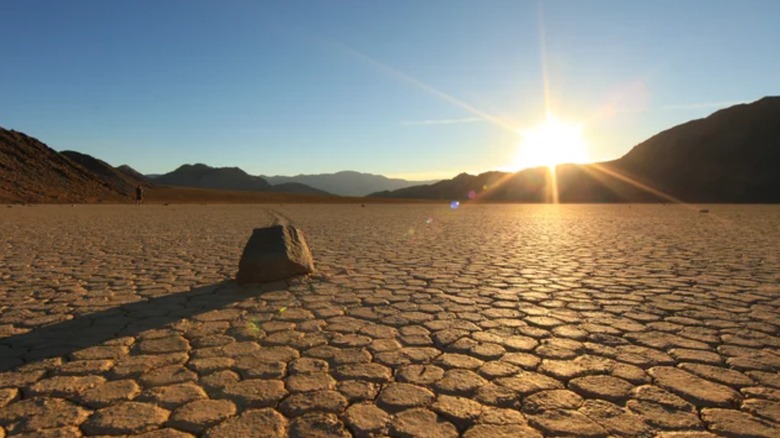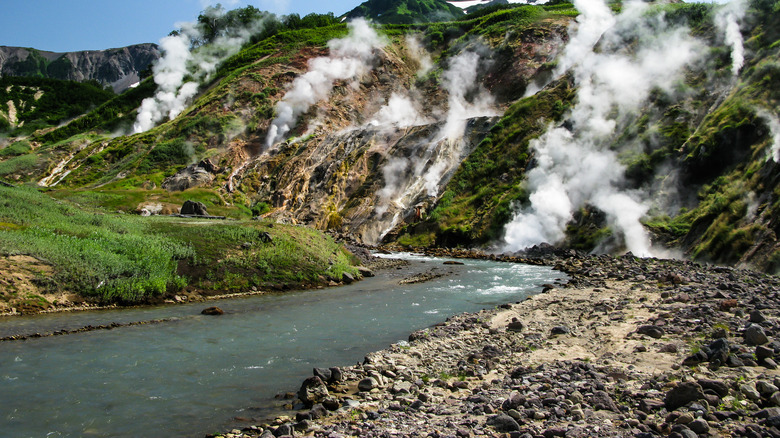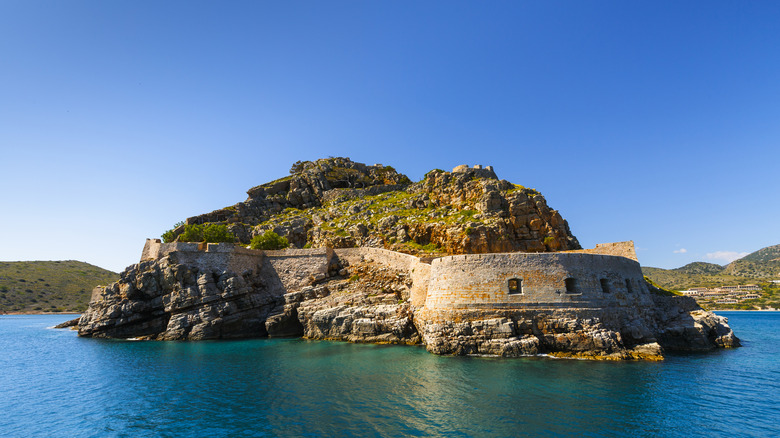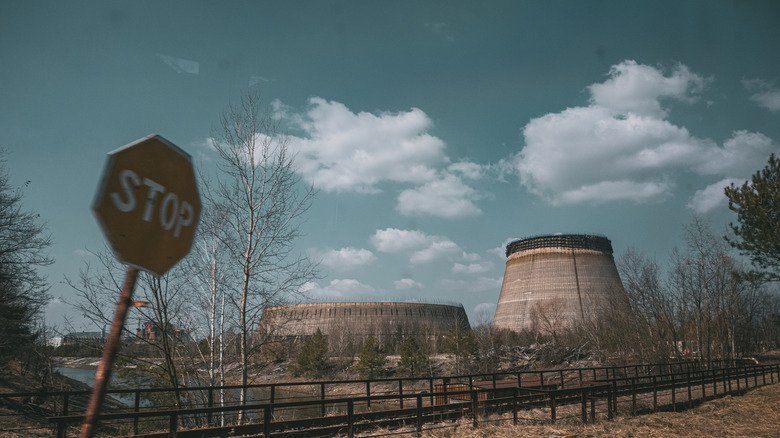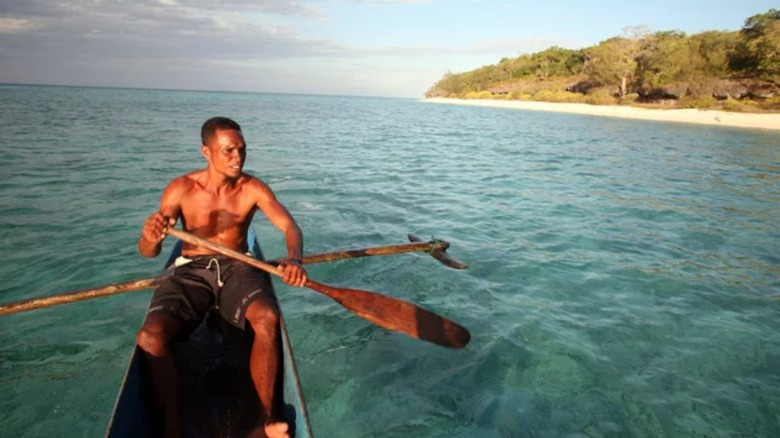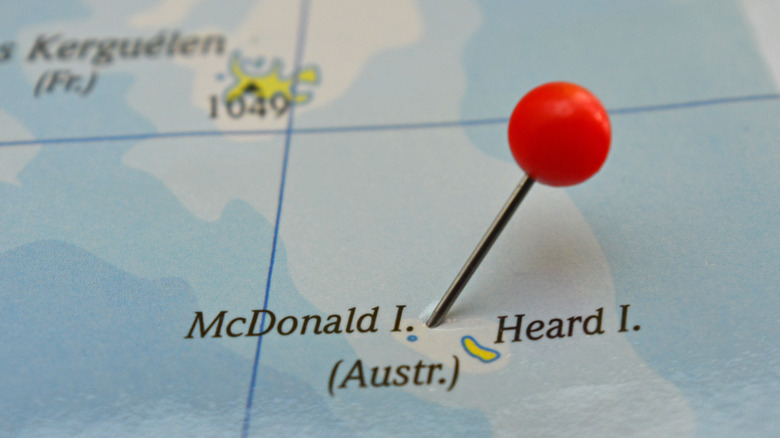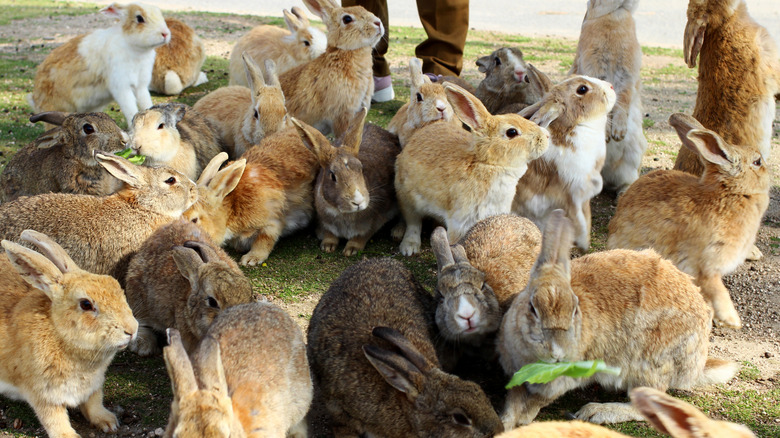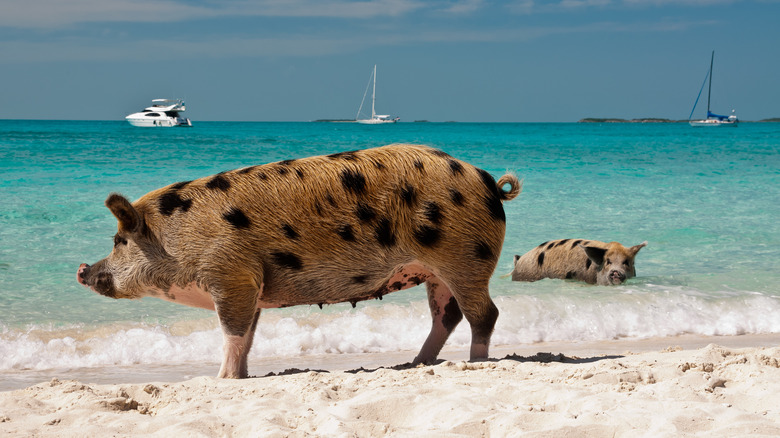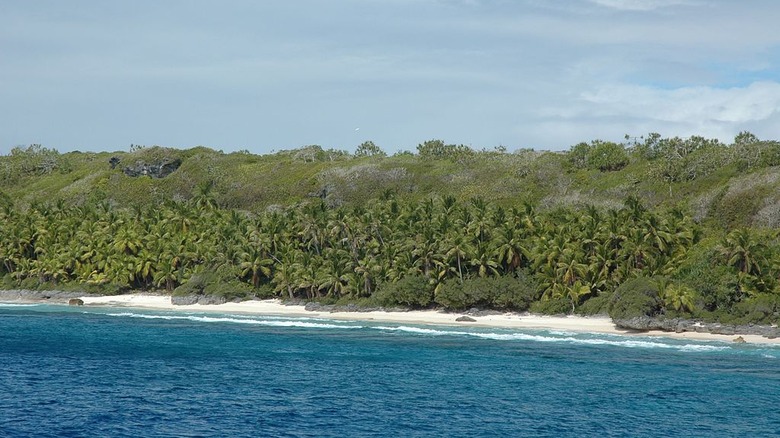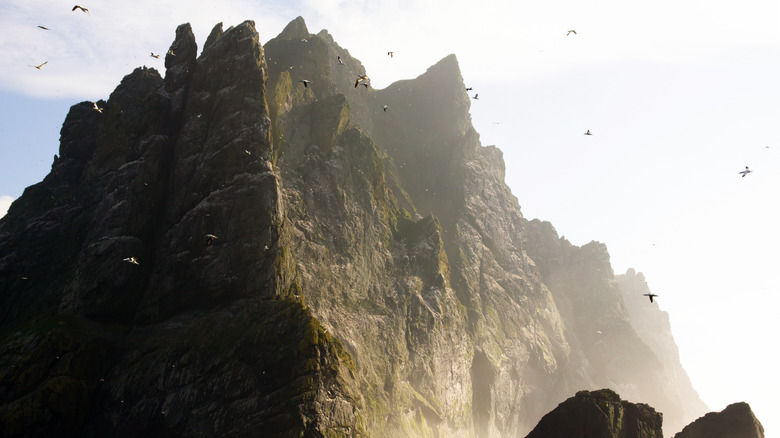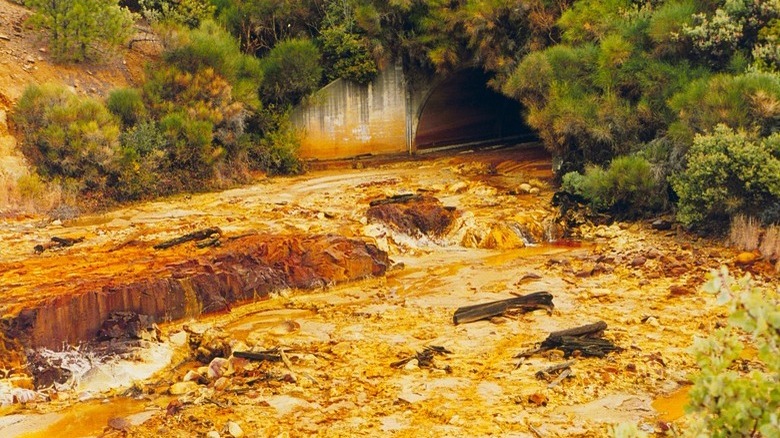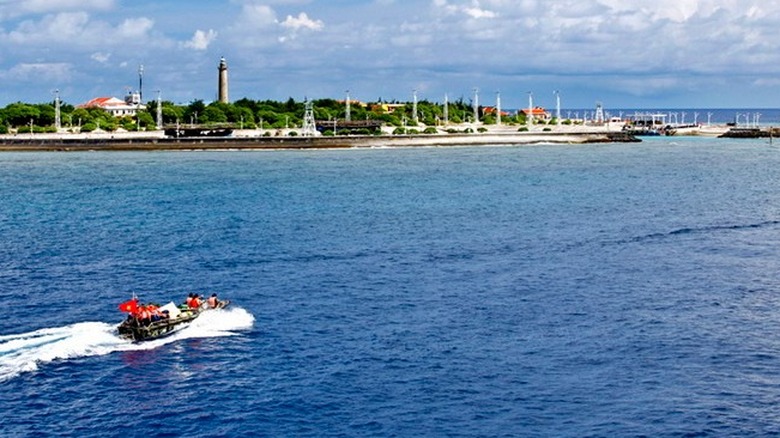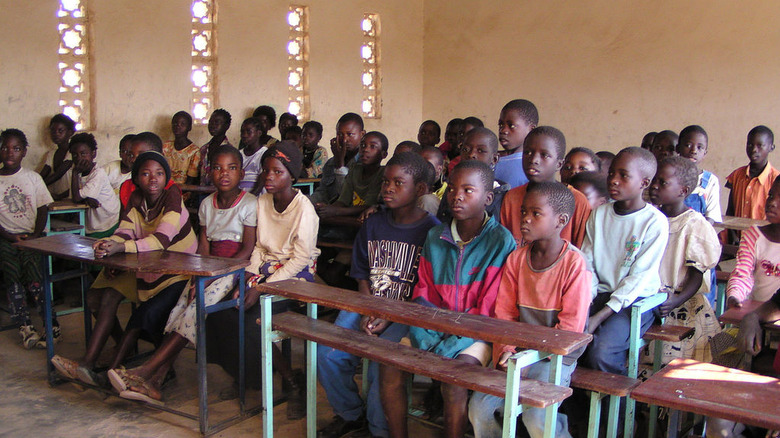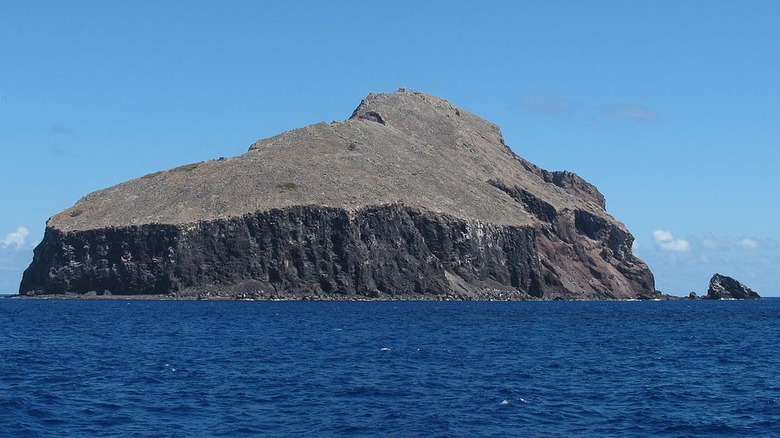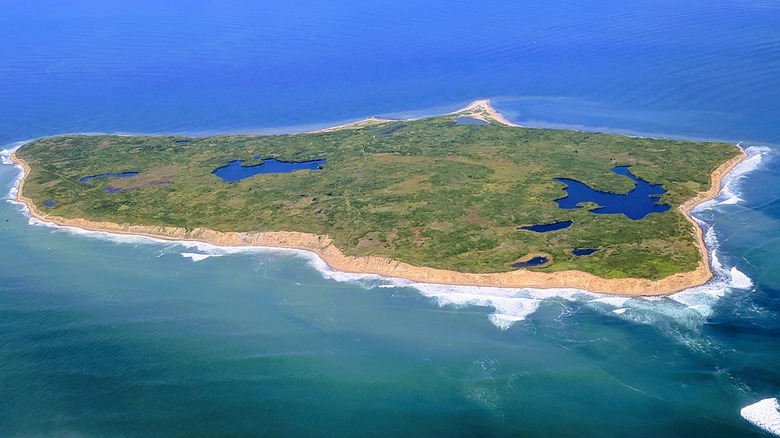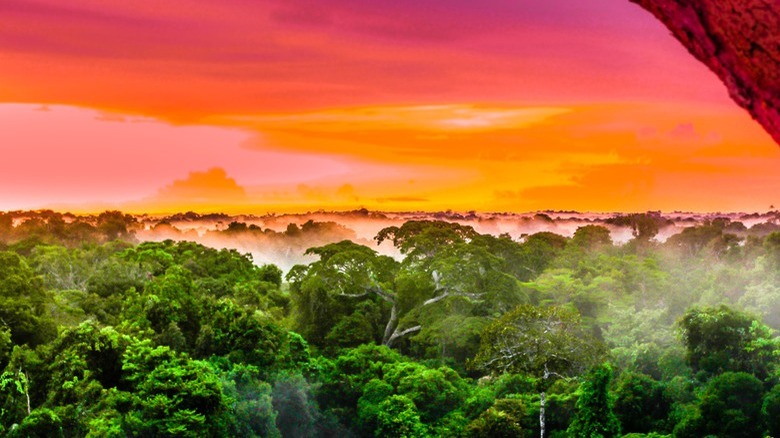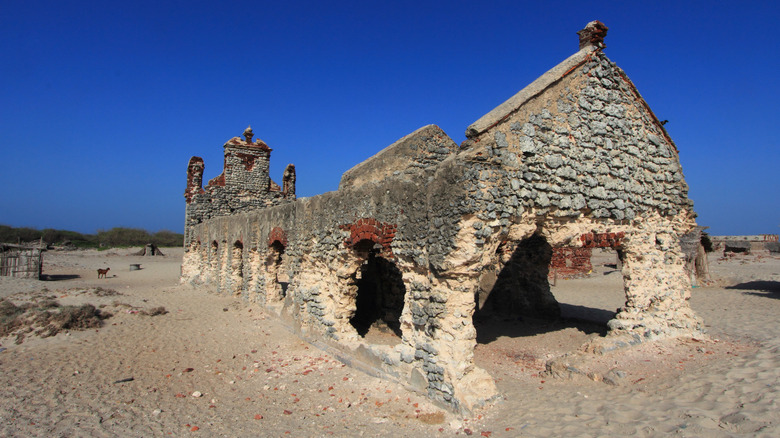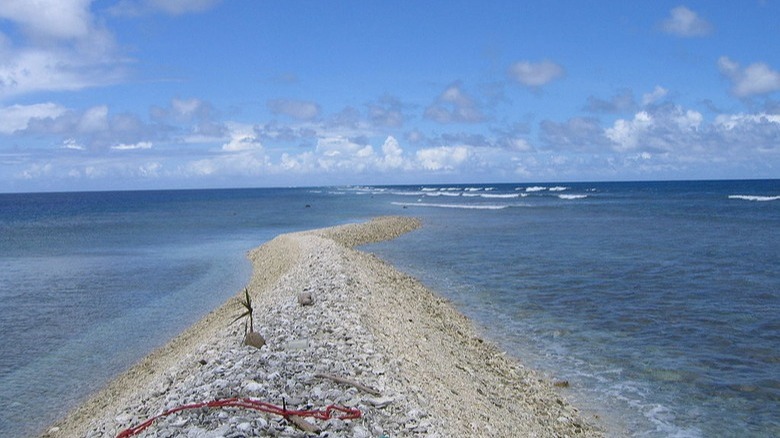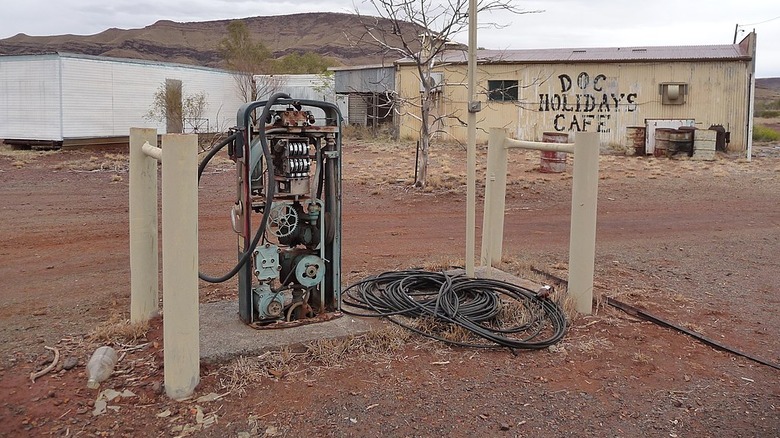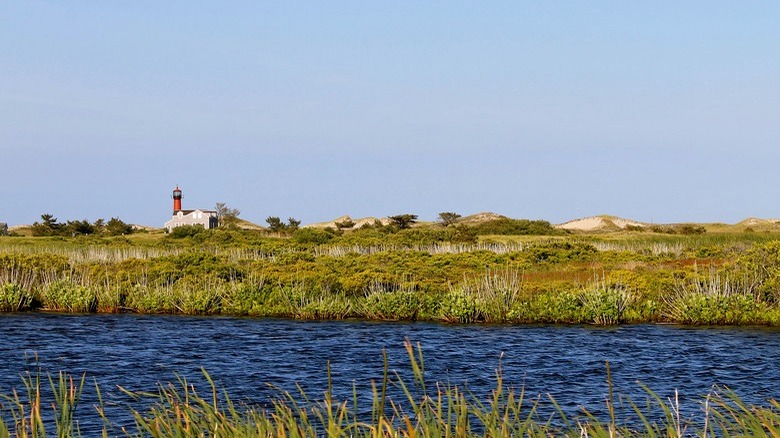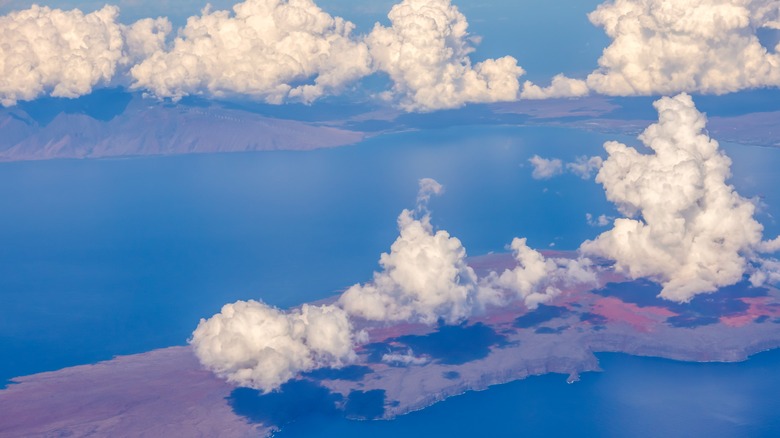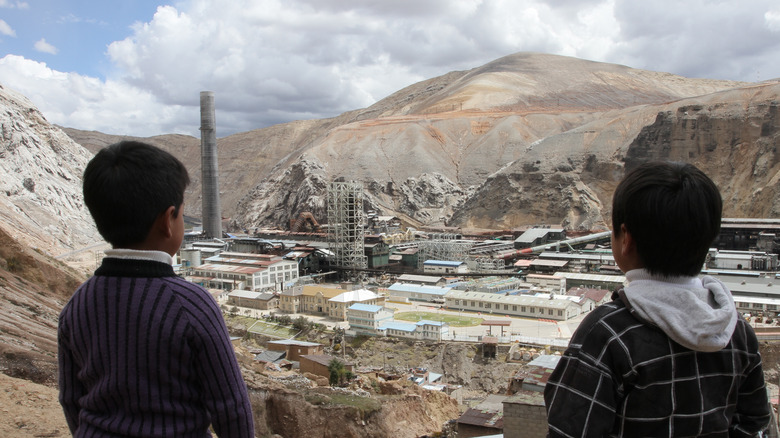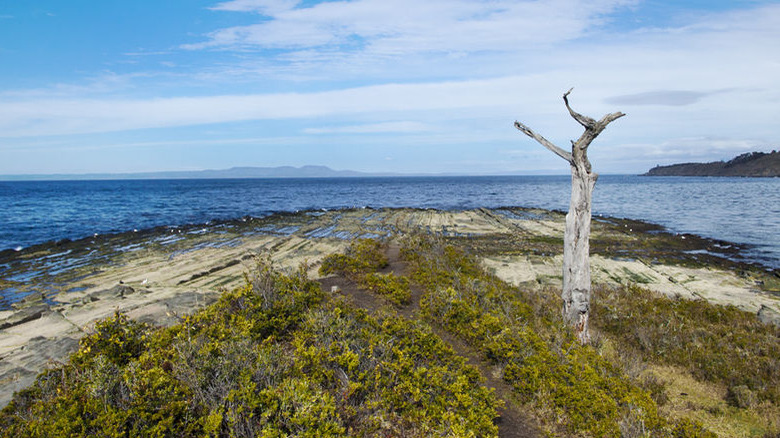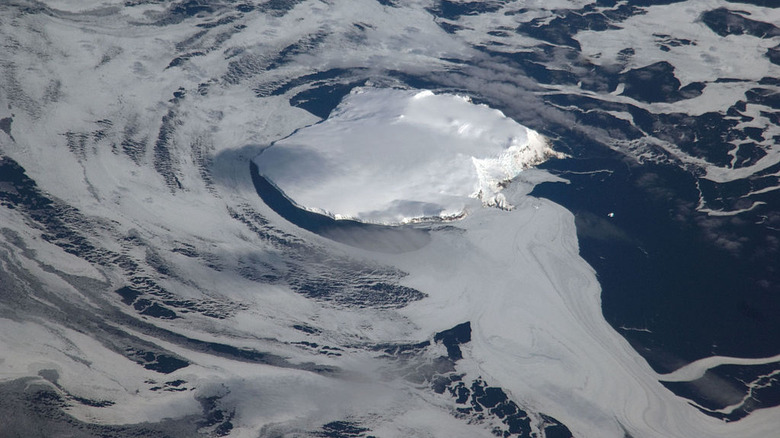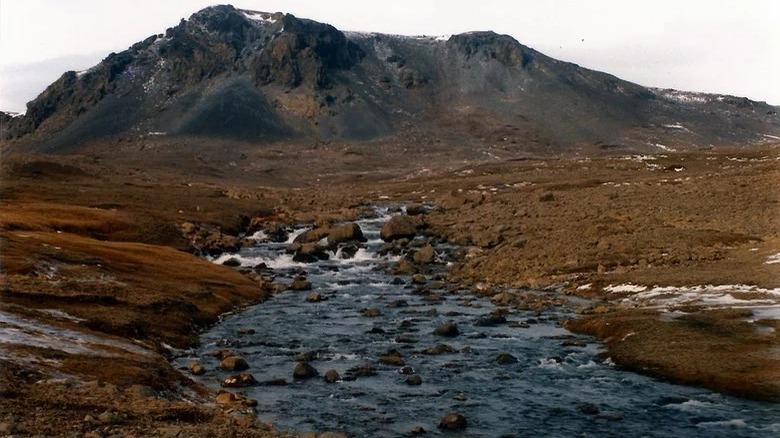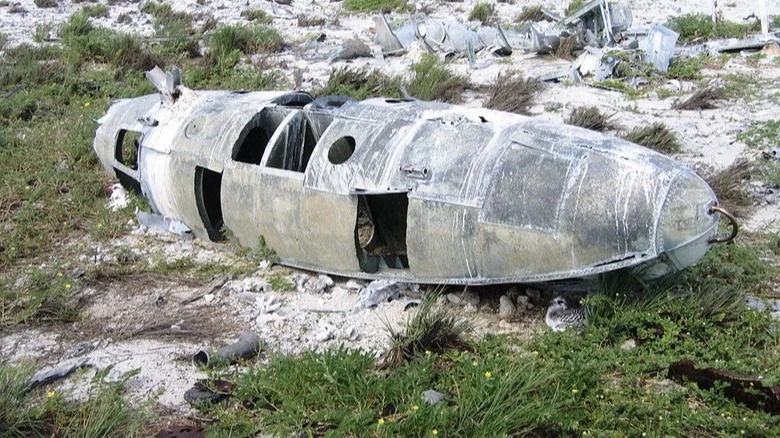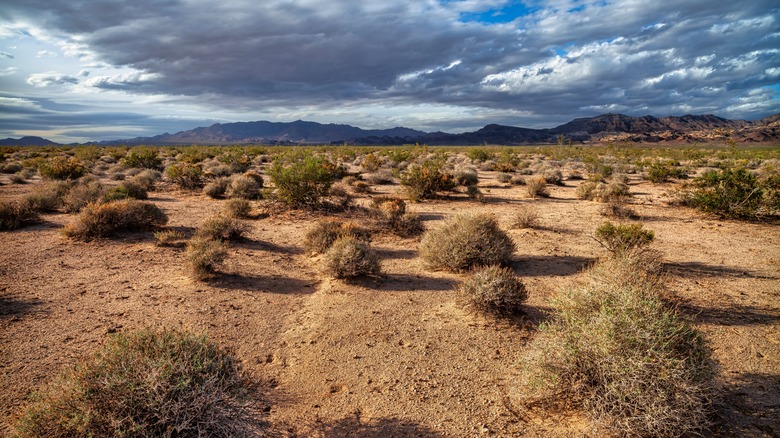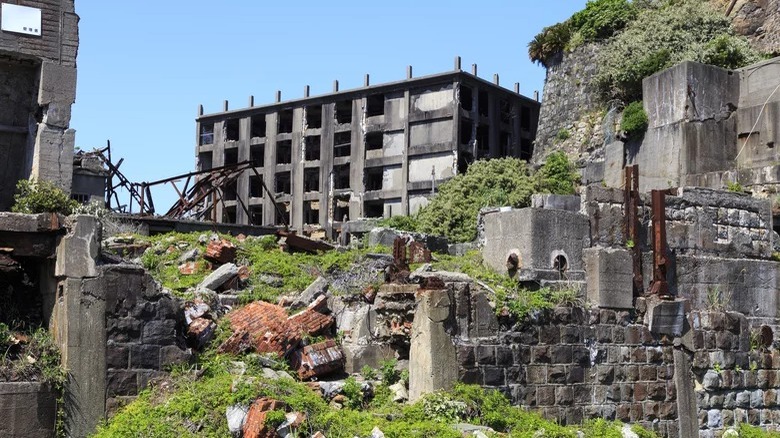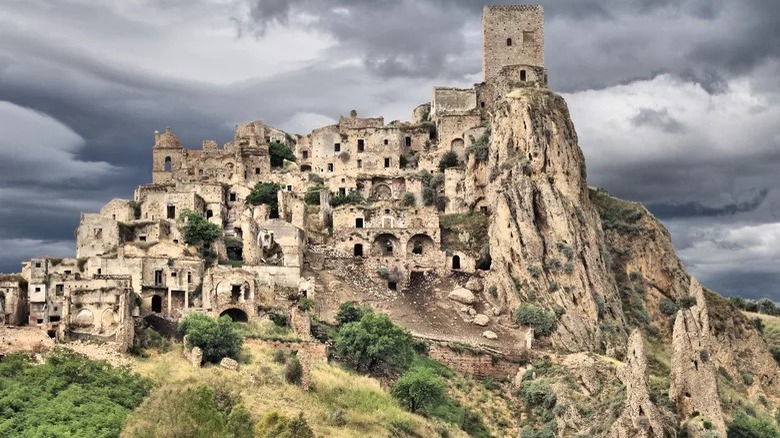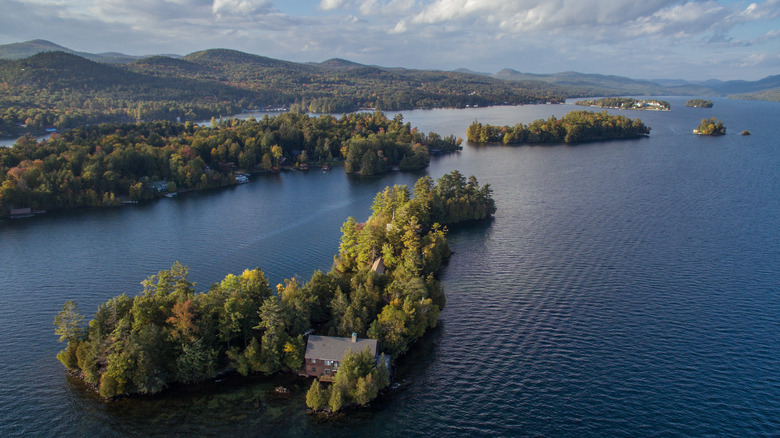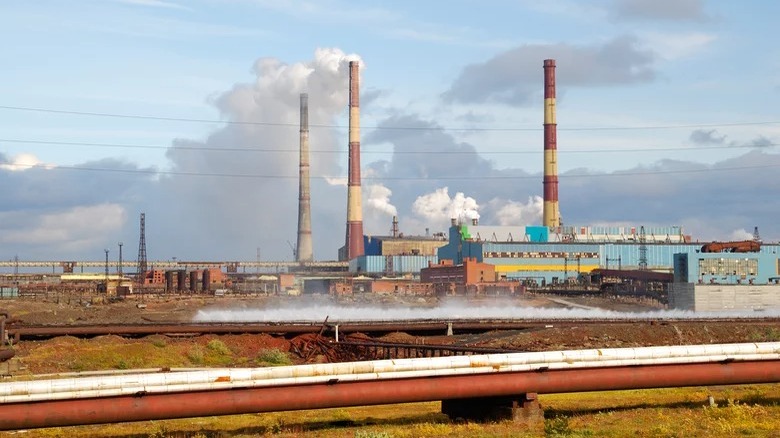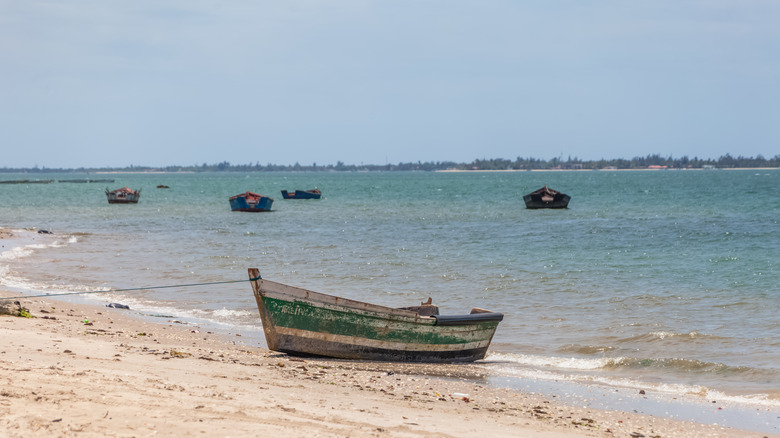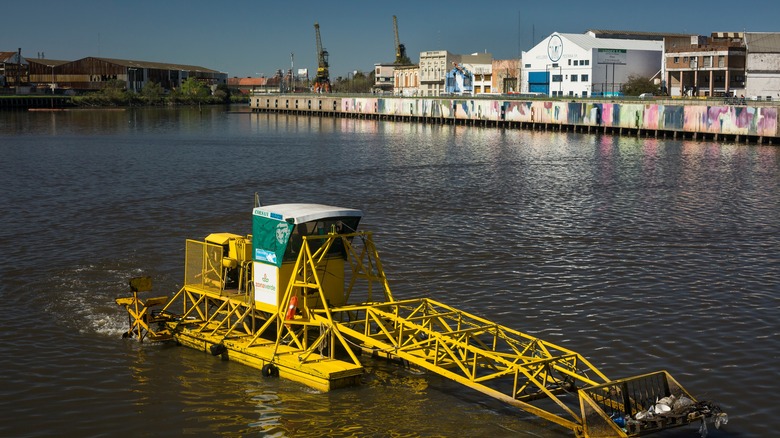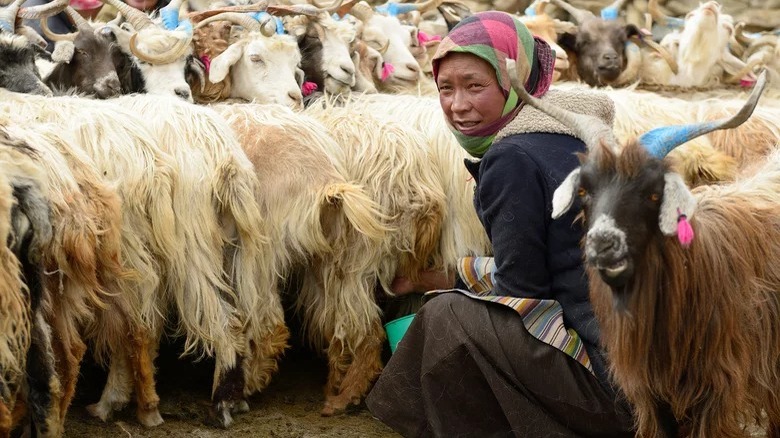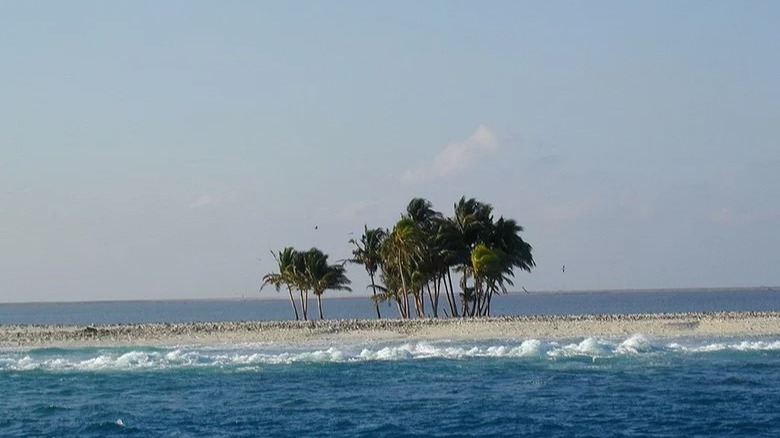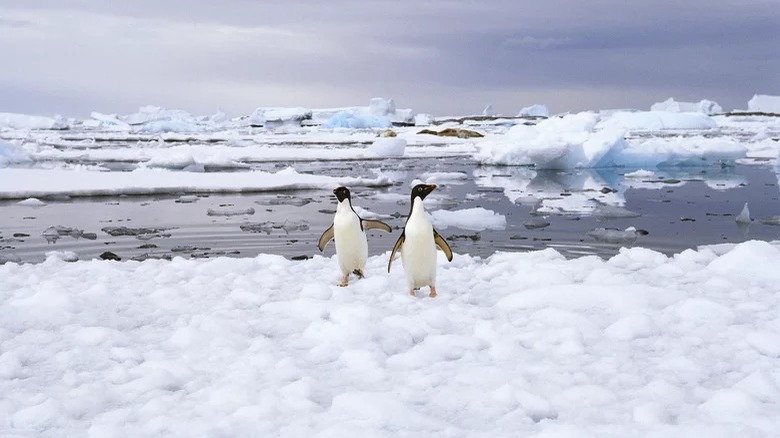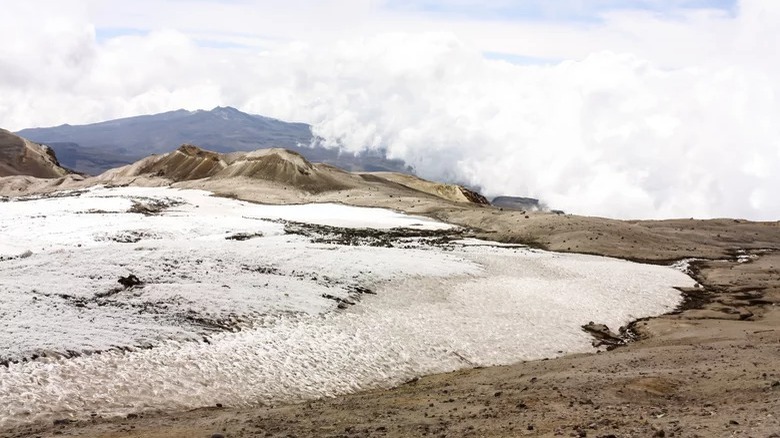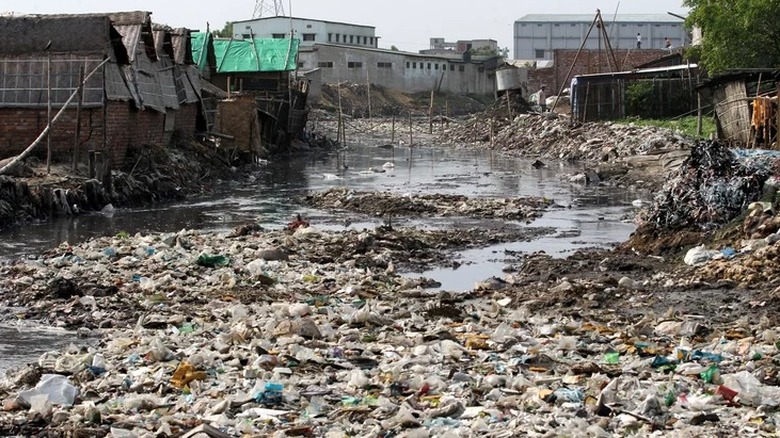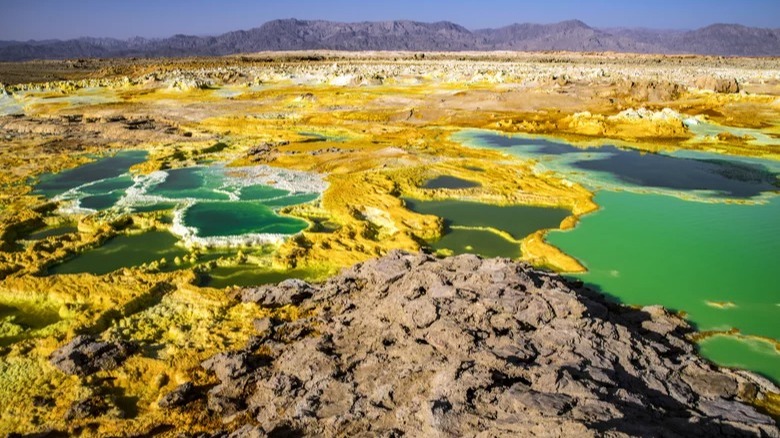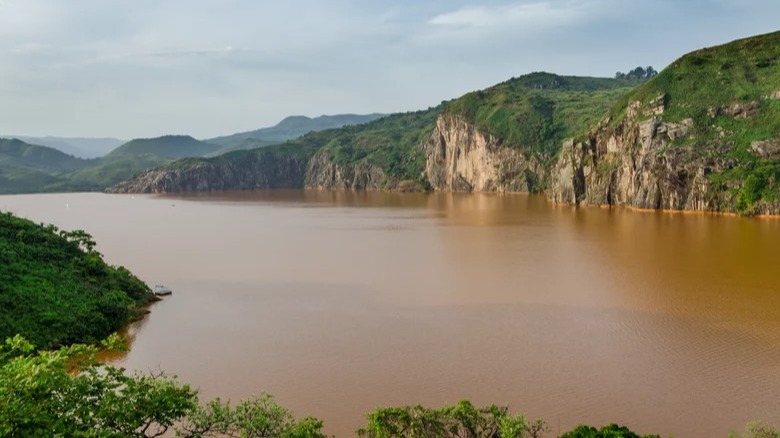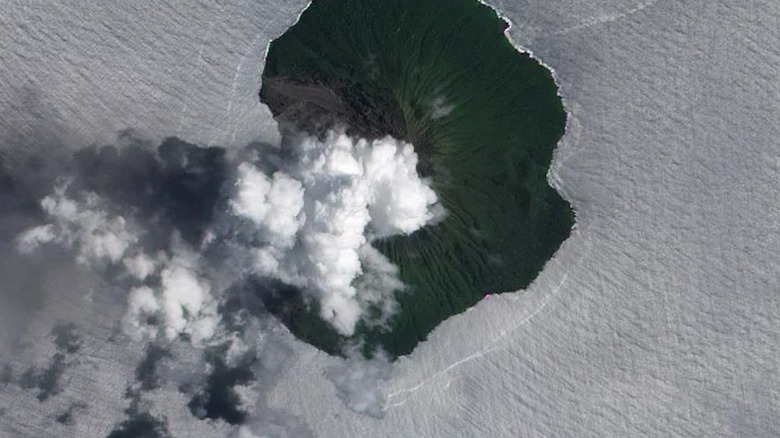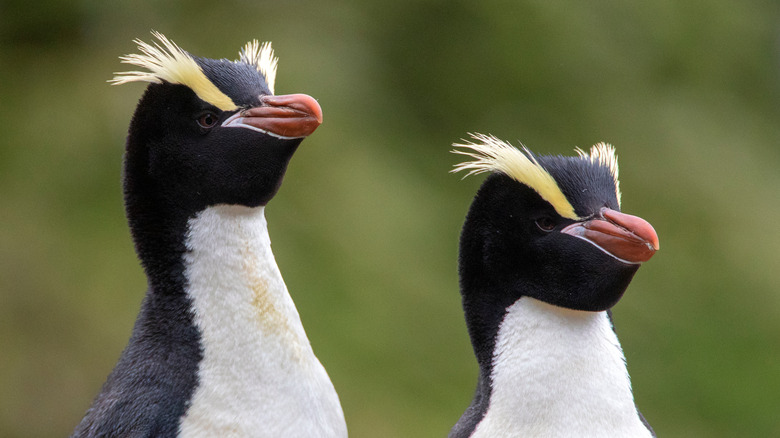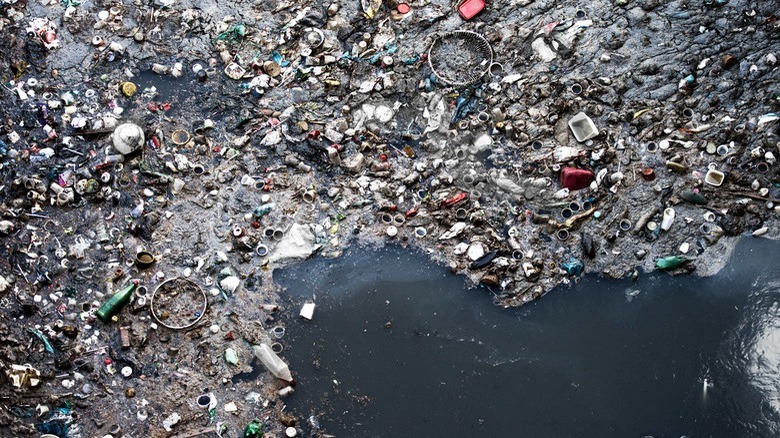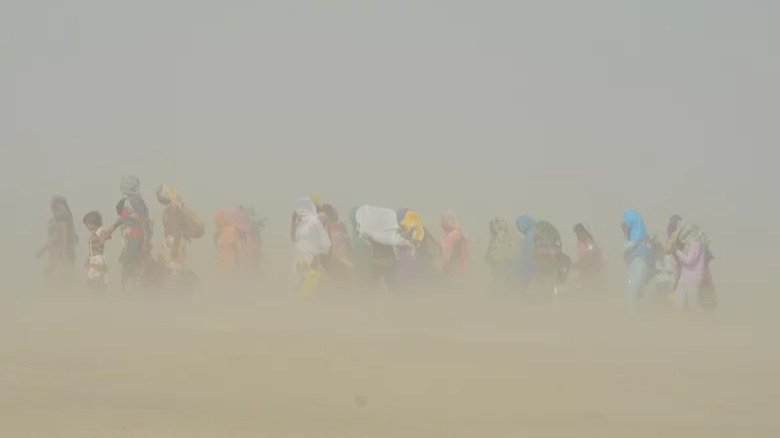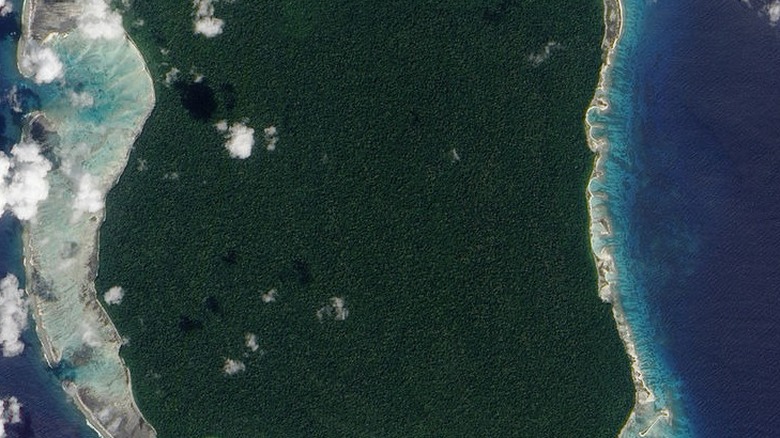The Most Uninhabitable Places In The World
Whether by nature or by human contamination, these 50 locations on this planet are unsuitable for living or even deadly for humans to inhabit.
Snake Island, Brazil
Ilha da Queimada Grande, off the coast of Brazil, is also known as Snake Island because it's overrun with golden lanceheads, venomous pit vipers whose bite can kill a person in under an hour. The snakes became stranded on the island when sea levels rose and cut them off from the mainland. Researchers estimate there are up to 4,000 of these snakes on the island, or roughly one snake per square meter, the Highest Concentration of Venomous Snakes in the world, according to Smithsonian Magazine. The Brazilian Navy has forbidden anyone from landing on the island.
Centralia, Pennsylvania
The truth of this ghost town in Pennsylvania is stranger than fiction. A dump fire spread inside the coal mine underneath the town in 1962, lighting a fire that has been burning ever since. The smoke, heat and poisonous gases travel up from the mine's tunnels and through the ground, making the town look like an entrance to the underworld. The temperature in one man's backyard was measured at 626°F. The fire has also burned up supports from under the ground, meaning sinkholes randomly open up, swallowing unsuspecting passersby, including pets, deer and a young boy who got sucked into a more than 100-foot-deep pit. The U.S. government finally ordered a total evacuation of the town in 1984, though a handful of residents still refuse to leave.
Greenland
With a population of just over 50,000, Greenland isn't quite uninhabited, but unlike it's southern counterpart, Iceland, Greenland is less hospitable to human settlement. Greenland's population is confined to a few coastal towns because roughly 80 percent of the island is covered by icy tundra and glaciers. Complex fjords, desolate Arctic deserts and impenetrable blizzards make some areas of the island inaccessible to humans.
Iceland
The mountainous and barren interior of the country is largely uninhabited because the weather and terrain are brutal. Lava deserts, volcanic mountains, snow and ice cover the majority of the region, with little vegetation.
Devon Island, Canada
Northern Canada is home to the largest uninhabited island in the world. Inuit families tried to settle the area in 1934 but the cold and wind were unbearable, often destroying buildings and boats. A Mountie outpost also was established but ultimately abandoned because the ice made it too difficult to patrol. Despite not being permanently settled, researchers and scientists have stayed on Devon Island because the isle's environment is actually a good simulator for life on Mars. NASA has used the area's barren terrain, freezing temperatures, isolation and remoteness to train crew members and test equipment such as rovers.
Death Valley, California
The lowest, driest and hottest place in the United States lives up to its name — Death Valley can indeed be deadly. The average daily temperature in July 2017 was 119.6 degrees with a high of 127, which is hot enough to kill livestock, knock out power and even kill people who aren't careful. The National Park Service doesn't recommend hiking there in the summer months. Even so, the area sees one or two heat-related fatalities every year, which can happen even if people are drinking water. Death Valley holds the recorded for the hottest reliably reported air temperature on earth: 134.06 degrees.
Valley of Death, Russia
Discovered in 1975, Russia's Valley of Death, located at the base of the Kikhpinych Volcano, isn't deadly because of heat but because of a cocktail of heavy toxic gases that settle into the valley, making the air there poisonous. Hydrogen sulphide, carbon dioxide, carbon sulphide and even cyanide spewed from nearby volcanic gas jets collect in the valley, where the air has killed hundreds of unsuspecting animals from ravens and rodents to bears and wolverines. Animal carcasses have been found well preserved because the poisonous atmosphere of the valley inhibits bacteria growth. The Valley of Death is closed to visitors and tourist, but can be seen from helicopter or a nearby observation deck.
Spinalonga, Greece
From 1903 to 1957, the island of Spinalonga was used as Greece's leper colony, making it one of the last active colonies in Europe as treatment for leprosy was discovered in the 1940s. Though it once housed 400 people, the final priest left the island in 1962, and the colony's buildings as well as the island's fortress have been abandoned ever since. According to the BBC, the Greek government initially burned all its files on the colony in an effort to cover up its existence. There are no permanent residents or accommodations, but tourists can now take day trips over to explore the eerie island and learn about its history.
Pripyat, Ukraine
Pripyat, Ukraine, was home to 49,000 residents until it was evacuated following the Chernobyl disaster in 1986, leaving it a haunting ghost town. Now pats of it deemed safe for visitors, tourists can explore the closest town to the No. 4 reactor, whose stores, schools, hospitals, cinema and even an amusement park all languish in various states of decay.
Jaco Island
Jaco Island is part of the Southeast Asian island nation of Timor-Leste, and despite its gorgeous white sand beaches and turquoise waters, it remains uninhabited. That's because locals consider the island sacred and don't step foot on it. It's now included in the country's first national park. Despite its status and the fact that it has no accommodations or development, some tourists will still visit the island for the day to take in its pristine beauty.
Heard Island
An Australian territory, Heard Island is the largest of a group of a remote, barren Antarctic islands and one of the most remote places on earth. It is dominated by an active volcano, which last erupted in 2016, surrounded by more than 40 glaciers. Its surface is 80 percent covered in ice, more 100 mph winds have been recorded there and the main animals that can survive there are penguins. During the 1800s, a number of sealers spent a year or more on the island until they decimated the seal population.
Okunoshima Island, Japan
Unofficially nicknamed Rabbit Island, Okunoshima was the site of Japan's secret chemical munitions plant, which it built despite being a signer of the Geneva Convention, which bans chemical warfare. The factory produced mustard and tear gas during World War II. After that, the island was set to be converted to a park and rabbits, potentially the facilities test rabbits, were released. Since then, the feral rabbits have taken over the island and the buildings have decayed to eerie ruins. The hundreds of cute rabbits, who are eager to be fed by people, offer a cute distraction from the history on display at the island's Poison Gas Museum.
Big Major Cay, Bahamas
Japan isn't the only country with an island overrun by feral furry friends. The uninhabited Bahamian island of Big Major Cay has been dubbed Pig Beach because of its local colony of wild pigs that first appeared in 2001. The pigs, whose origins are a mystery, not only live on the island but will swim in the surrounding waters to snag a snack from passing tourists.
Henderson Island
This uninhabited South Pacific Island's ecology has been virtually undisturbed by human presence because of its inaccessibility and inhospitable nature, but it has been affected indirectly by humans. Henderson Island, located halfway between Chile and New Zealand, has accumulated 38 million pieces of plastic trash on its shores. The detritus washes up on the island because of an ocean current that basically acts as a conveyor belt for the world's garbage, according to National Geographic. Between being both a marine reserve and a trash collector, it seems likely the island will continue to remain uninhabited.
St. Kilda, Scotland
The most remote settlement of the British Isles, St. Kilda is often cut off by storms for weeks, even months, at a time. Perhaps that's how its previous inhabitants developed an entirely separate culture, economy and government apart from their English rulers. Between missionaries and officials coming over to "civilize" them, their sources of income becoming obsolete, high emigration and infant mortality rates, and disease-ridden tourists coming to gawk at them, the few remaining native islanders voted to evacuate in 1930. Though some people have wanted to resettle St. Kilda, the unforgiving island has not been permanently inhabited since.
Iron Mountain, California
Some of the most acidic water in the world can be found in the streams stemming from Iron Mountain Mine in California. Predominantly mined for copper, as well as zinc, gold, silver, and pyrite, the mine, described as "a hellish pit" by SF Gate, is the largest source of surface water pollution in the U.S. as it's connected to 19 percent of California's water supply. The mine's water is so acidic it can burn clothes and skin, causing experts to describe it as the "world's worst water."
Spratly Islands
The Spratly Islands are a group of 100 small islands whose ownership is disputed by multiple countries. The islands have strategic military and shipping positions in the South China Sea, are surrounded by rich fishing grounds and could potentially house deposits of oil and natural gas. China, Taiwan and Vietnam lay claim to all of them, with Malaysia and the Philippines claiming smaller portions. Because of their status, no permanent residents live on the islands, though all five countries occupy 45 of the islands with small military forces. China's actions in the area are considered especially controversial as they have been building artificial islands, which harm local coral reefs.
Kabwe, Zambia
The Guardian describes Kabwe, Zambia, as the world's most toxic town. A century of lead mining and smelting in the former British colony exposed generations to unprecedented amounts of toxins and mass lead poisoning. Though the plants closed in 1994, the community of 220,000 people continues to be affected by lead in dust and soil that is about 10 times the U.S. safety limit. Remediation work is just beginning thanks to a $65 million project through World Bank. Though so many people continue to live there out of necessity, it is dangerous.
Redonda, Antigua and Barbuda
Redonda is an uninhabited Caribbean island that was discovered and named by Christopher Columbus in 1493. The island can't sustain humans because it lacks a freshwater source, soil for growing anything besides meager grass and safe places to land boats. Despite this, there are two stone huts that were built on the island when it was used for 50 years to mine guano from sea birds. Between the 1860s and 1914, workers mined up to 4,000 tons of guano a year to use as fertilizer.
Nomans Land, Massachusetts
The aptly named island Nomans Land is about 3 miles off the coast of Martha's Vineyard. Though it formerly had two villages on it, an airfield was built on the island in the 1940s and it was used by the Navy as a practice bombing range until 1996. Despite cleanup efforts, undetonated bombs still dot the island, keeping it and its surrounding waters closed to the public. Today, it serves as a wildlife refuge for migratory birds.
The Javari Valley, Brazil
The Javari Valley in Brazil is a rainforest preserve that is uninhabitable to modern society because it's home to the largest concentration of uncontacted tribes in the entire world. The government estimates there are 14 uncontacted tribes made up of about 2,000 people in the dense jungle; they have been detected via satellites and flyovers of cleared areas. These tribes are highly susceptible to disease and destruction of their way of life through contact with the outside world. Though there are efforts to protect them from intrusions, illegal gold miners, fisherman, hunters and loggers have invaded the region.
Dhanushkodi, India
Dhanushkodi is a coastal Indian ghost town that became uninhabited after it was decimated by a cyclone in 1964. The storm made landfall at the town, sweeping through with 170 mph winds and tidal waves 23 feet high, ultimately killing an estimated 1,800 people. The water had enough power to sweep away a train and rip up railway lines. The area's exposure to the elements and the storm's damage caused the government to deem the area unfit for living. The waters finally receded, allowing visitors to see the ruins of the churches, buildings and homes that were destroyed.
Kingman Reef
Kingman Reef is part of the Line Islands in the Pacific. Though it's owned by the United States, this coral island is actually just two thin strips of "land" made of coral rubble and shells that are less than 5 feet above sea level. The atoll also earned the nickname Danger Reef as it becomes a maritime hazard when it becomes fully submerged at high tide. While some coconut palms have successfully taken root there, they don't survive.
Wittenoom, Australia
The site of a former blue asbestos mine, Wittenoom is one of the most contaminated places in Australia. The roads were literally paved with asbestos, even after the mine shut down in 1966. The city once was home to more than 20,000 residents, but rapidly lost population after more than 300 former mine workers died of mesothelioma. The government deemed it too expensive to clean up the town, so they declared it unfit to inhabit and struck it from maps. Despite this, three residents refuse to leave the dangerous, near-abandoned ghost town.
Monomoy, Massachusetts
Off of Cape Cod lies an island that hasn't been inhabited since the U.S. government turned it into a wildlife refuge in 1970. A town of fishers and sailors began to develop as early as 1710 and grew to about 200 residents with a lighthouse, schoolhouse and a bar. A hurricane destroyed the natural harbor in 1860, and the island was abandoned. Attempts to reinhabit the area failed as it continued to be hit with hurricanes and blizzards that separated it from the mainland.
Kahoolawe, Hawaii
Most U.S. mainlanders haven't even heard of Kahoolawe, the smallest of the main Hawaiian islands, which sits near Maui. Although ancient Hawaiians once lived here, it's currently uninhabited. On top of lacking fresh water, the island has a mysterious history. It served as a penal colony in the 19th century, was turned into a ranching venture that failed, then later became a U.S. military bomb testing site; it was the location of a simulation of a nuclear bomb in 1965 that left a massive crater in the island. In 1994, the island was returned from the military back to the state of Hawaii.
La Oroya, Peru
The town of La Oroya, population roughly 30,000, has been contaminated by a metal smelter since 1922. Though the smelter closed in 2009 when its American-owned company declared bankruptcy after running out of money to fund environmental cleanup and anti-pollution measures, it remains one of the most polluted cities in the world. Toxic metals have infected the water, the soil and the air. Children suffer from medical conditions stemming from overexposure to dangerous metals far above acceptable standards. While people do live there, the area is unsafe.
Port Famine, Chile
Puerto del Hambre, which translates to Port Famine, was a settlement along the strait of Magellan in Chile that earned its name after its initial group of 300 settlers who arrived in 1584 all starved or froze to death. The harsh conditions meant little local vegetation or fertile soil. The settlement was left in ruins and the bleak area just south later became a naval base that was visited by Charles Darwin on his voyages. Chile attempted to resettle the site again in the 1840s but ultimately abandoned the venture. The fort and settlement are now a national monument.
Bouvet Island
The most remote island in the world is Bouvet Island, a dependency of Norway that is closest to Antarctica in the Atlantic Ocean at just less than 1,000 miles away. The island, which has the crater of an inactive volcano at its center, is 93 percent covered by a glacier. Only moss and algae can grow on the non-frozen surfaces, though these areas are steep and prone to avalanches. In 1996, Norway built a research station that was unlodged during an earthquake and then washed to sea in a winter storm in 2006.
Kerguelen Islands
The French Kerguelen Islands in the Indian Ocean are also called the Desolation Islands, in part for their remoteness, their lack of inhabitants aside from researchers and the brutal cold and wind. The next closest civilization, Madagascar, is 2,051 miles away. In 1912, sheep were brought to the island as the first stage in establishing a settlement, but the plan failed and the surviving settlers were evacuated in 1931.
Howland Island
This U.S. island lies halfway between Hawaii and Australia and has no inhabitants or economic activity. A rudimentary air strip was built there in the mid-1930s, leading to the island's one claim to fame. Amelia Earhart was supposed to land there when she disappeared in 1937. While some Hawaiians were brought over as settlers for a few years, the island was bombed during World War II, the day after the Pearl Harbor attack. With the majority of buildings destroyed, all settlement attempts were abandoned in 1944.
Nevada National Security Site
The Nevada National Security Site is the most uninhabitable place in the U.S. that is unlivable because of manmade reasons. This area, which is 75 miles from Las Vegas, is where the U.S. conducted tests of weapons and nuclear bombs from 1951 to 1992. The government detonated 921 nuclear warheads underground, poisoning the soil and 1.6 trillion gallons of water. Some areas are still so radioactive that anyone entering has to wear a hazmat suit.
Hashima Island, Japan
Underwater coal mines fueled the rapid development of Japan's Hashima Island. When the mine closed in 1974, the island's town was abandoned for three decades and its concrete buildings, including apartments, a school and a movie theater, became ruins. Its ghostliness began attracting attention and visitors until a portion of the island was officially re-opened to tourists in 2009. It was named a UNESCO World Heritage site in 2015 for the way it commemorates Japan's industrial revolution.
Craco, Italy
The cliffside Italian town of Craco has been a ghost town since the final inhabitants abandoned the city in 1980. The town's sewer and water systems compromised the ground of the already earthquake-prone hills, causing unpredictable landslides. Visitors can still explore the town on a guided tour, and despite the danger, some movies have been filmed here, such as "Quantum of Solace," and festivals are still held here every year.
North Brother Island, New York
Today, North Brother Island in the East River is a protected bird sanctuary, but its creepy history would prevent most people from ever thinking of living there. The island was previously used as a quarantine facility for patients with smallpox and other communicable diseases, including the infamous Typhoid Mary, who was exiled here for two decades until she died in 1938. The hospital buildings were later used for veterans' housing then a drug rehab center before being shuttered in 1963 and closed to the public. The buildings' ruins are still standing.
Norilsk, Russia
Norilsk, Russia, is the northernmost city on Earth and was originally founded as a Siberian slave labor camp. Just 250 miles from the Arctic Circle, the town experiences two months of total darkness every year and an average annual temperature of 14 degrees. The city also suffers from major air pollution from metal mining and processing, which releases 4 million tons of cadmium, copper, lead, nickel, arsenic, selenium and zinc into the air every year, according to Time. Snow comes down black, the air tastes like sulfur and there's not a living tree within 30 miles of the city's nickel smelter.
Tigers Bay, Angola
Baia Dos Tigres, or Tigers Bay, is an Angolan fishing village that was abandoned when rising ocean levels severed the peninsula it's on from the mainland, cutting off the town's freshwater supply and making transportation difficult. The residents all moved when civil war broke out in the 1970s. It's now known as "Ghost Island." Hundreds of its Portuguese colonial buildings still stand.
Matanza-Riachuelo River Basin, Argentina
With a name that translates to "Slaughter Creek," it should be no surprise that the Matanza-Riachuelo River Basin south of Buenos Aires, Argentina, isn't an ideal place to live. The basin shares its shores with some 1,500 industrial sites that dump contaminants like heavy metals and chemicals into the water, effectively poisoning it. Though this makes it unsuitable for habitation, some 5 million people live in the slums surrounding the basin.
Tibetan Plateau
The lack of oxygen and low air pressure at altitudes above about 8,000 feet have negative effects on the human body, including altitude sickness and high altitude pulmonary edema. The Tibetan plateau sits at an average of 14,800 feet, earning it the nickname "the Roof of the World." The plateau is covered in glaciers, and most of the precipitation there comes down as hail. Despite this, nomadic herdsmen are dispersed throughout, even in the inhospitable Changtang region. The least populous region in Asia, Changtang has an average altitude above 16,000 feet, winter temperatures as low as -40 degrees and little vegetation besides grass for raising livestock.
Clipperton Island
Now belonging to France, Clipperton Island was once a Mexican mining colony whose tragic failure has kept people from inhabiting it since. Around 100 colonists lived on the mostly barren island in 1914, but when the Mexican Revolution escalated, supplies stopped coming and the settlers were left to fend for themselves. Over the next three years, most of the population died from scurvy, until just one man and 15 women and children remained. That man declared himself king of the island and began raping and murdering the women. One woman finally killed him, and the surviving four women and seven children were rescued soon after by a passing U.S. Navy ship.
Antarctica
Antarctica is 98 percent covered with ice, with the other 2 percent being barren rock. It is the coldest, windiest, highest and driest continent, with average high temperatures that are below freezing and long winters in near-total darkness. While many countries maintain year-round research bases there, few plants and little animal diversity thrive there, so most food is imported.
Armero, Colombia
A volcanic eruption in 1985 rendered one Colombian city a ghost town. The eruption of Nevado del Ruiz caused the mountain's glaciers to melt, inducing 30 mph mudslides and landslides that engulfed the town of Armero below, killing more than 20,000 of its 29,000 inhabitants. This makes it the fourth-deadliest volcanic event recorded since 1500 A.D. The volcano continues to erupt, and what was left of Armero was abandoned.
Hazaribagh, Bangladesh
The Hazaribagh neighborhood of Dakar, the capital of Bangladesh, is home to hundreds of tanneries that pollute the city's water supply with toxic waste as well as burn leather scraps, causing dangerous levels of air pollution. Acid burns, rashes, aches, dizziness and nausea are common health problems among workers and residents, according to the Human Rights Watch. The region is considered one of the worst polluted in the world.
Dallol, Ethiopia
The city of Dallol in Ethiopia's Danakil Desert is the hottest place year-round on the planet with an average high temperature of 105 degrees as well as one of the most remote places on earth. Between the nearby Dallol volcano, which last erupted in 2011, the wasteland of salt flats dyed neon colors from toxins released by hot springs and dust storms, only the nomadic Afar people dare to call this area home. The former mining town of Dallol has been all but abandoned since the 1960s.
Lake Nyos, Cameroon
Lake Nyos is a rare "exploding lake" located in Cameroon that sits in a volcanic crater. The lake's magma floor bleeds carbon dioxide into the water and the surrounding air, where it typically harmlessly dissipates. But in 1986, the lake faced a limnic eruption, in which a cloud of more than 1 million tons of CO2 burst from the lake bed, creating a noxious cloud of heavy CO2. The gas displaced the area's oxygen, suffocating the more than 1,700 people and 3,500 livestock in the area. It was reportedly the first known large-scale asphyxiation caused by a natural event. Despite the threat of another eruption as well as the lake's weakening walls that could result in a massive flood, people have resettled the area around the lake.
Tinakula Island
Tinakula is an uninhabited volcanic island in the Solomon Islands in the Pacific Ocean. The island's active volcano wipes out any populations that try and settle there, including groups of Polynesians in 1840 and 1971. On top of the threat of volcanic eruption and part of the island being covered in ash, the island lacks good landing places for boats and is also located in an earthquake belt.
Antipodes Islands, New Zealand
Despite numerous attempts at settlements, New Zealand's Antipodes Islands are inhospitable to human, animal and plant life. A castaway depot was established on the island, though, as it is a hotspot for shipwrecks but lacks many resources for survival. In 1978, the islands were made a nature reserve.
Dzerzhinsk, Russia
According to Time, the Soviet city hit hardest by pollution from Cold War-era weapons manufacturing is Dzerzhinsk, where an estimated 300,000 tons of chemical waste was dumped. Residents' life expectancy is only 40, partly because the drinking water in Dzerzhinsk has 17 million times above the safe limit of toxic dioxins.
Zabol, Iran
Zabol, Iran, is a dust storm hotspot. The summertime is known for the "120-day winds," according to the Financial Tribune, when dust and other particulate matter bombard the city, thanks to the disappearance of nearby wetlands and high temperatures. Officials hand out thousands of air pollution masks because of the damage the particulates can cause to the lungs. A 2017 study found that the dangers of breathing the air there for 30 minutes outweighed the benefit of 30 minutes of cycling. Zabol was named the most polluted city in the world by the World Health Organization in 2016.
North Sentinel Island
Part of the Andaman Islands in the Indian Ocean, North Sentinel Island is technically inhabited, but by a native peoples who violently reject any contact with the outside world. They've fled into the dense jungle or attacked anyone who approaches with spears and arrows, including government workers; they have killed fishermen who get too close. Organizations now protect the area, respecting the islanders' wishes to remain isolated. From what has been gathered from observation from a distance, the Sentinelese don't have agriculture or a means to produce fire on the island, relying on hunting and fishing for survival. The population is estimated to be between 50 and 500.
